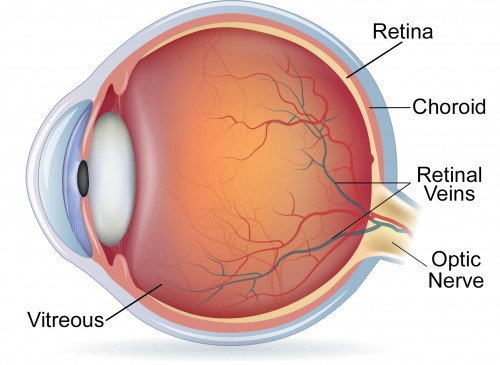

Because only a few patients develop abnormal new blood vessels in the retina, not many need scatter photocoagulation treatment.Īuthors THANK YOU TO THE RETINA HEALTH SERIES AUTHORS Scatter photocoagulation has been shown to reduce neovascularization-related complications from 60% to 30%. Patients receive an anesthetic to numb the eye and make the treatment more comfortable. The aim is to try to lower the oxygen demand of the retina and thus stop the abnormal blood vessels from growing. When neovascularization develops, scatter laser photocoagulation therapy is used to create burns in the area of the vein occlusion (blockage). This growth can further decrease vision by causing vitreous hemorrhage that causes floaters and loss of vision, retinal detachment, and glaucoma. Retinal neovascularization is a potentially serious complication of BRVO in which an inadequate blood supply (ischemia) causes abnormal new blood vessels to grow on the surface of the retina. Over 60% of patients, treated and untreated, maintain vision better than 20/40 after 1 year. In fact, some BRVO patients don’t require treatment at all, either because the blockage did not involve the macula, or because they have not experienced a decrease in vision. Overall, BRVO carries a generally good prognosis. While intraocular steroids can have some side effects such as an increase in eye pressure and cataract progression, in most cases, these side effects can be controlled.
#NORMAL RETINA ARTERIES AND VEINS TRIAL#
A clinical trial that evaluated steroid treatment using a slow-releasing steroid implanted in the eye (dexamethasone or Ozurdex®), showed that approximately 30% of BRVO patients enjoyed significant visual improvement following treatment. Intraocular injections of steroids are another potential treatment for eyes that don’t respond to anti-VEGF drugs. In a large multi-center clinical trial, after 3 years of follow up, this treatment showed improvement of vision in approximately two-thirds of patients. Laser therapy for macular edema involves applying light laser pulses to the macula in a grid pattern. Laser treatment may be used along with anti-VEGF therapy in hard-to-treat cases. The use of these drugs may require frequent retreatment, but injection schedules are determined on a case-by-case basis. In several large clinical studies, all 3 of these anti-VEGF drugs have demonstrated good results, with over 50% of patients enjoying significant visual improvement. Local anesthetic eye drops are given before the injections to numb the eye and minimize discomfort. Macular edema, the main reason for visual loss from BRVO, is often treated with intraocular (in-the-eye) injections of anti-VEGF drugs designed to stop the growth of abnormal new blood vessels in the eye and decrease leakage. Blood tests, if appropriate, to determine if there is an abnormal tendency to form blood clotsĮye treatment is aimed at treating retinal complications rather than at trying to relieve the blockage itself.Determining if blood cholesterol or lipid levels are elevated.Risk factors are assessed using several methods: Treatment begins with identifying underlying risk factors and treating them. Once BRVO has been found, OCT is used to provide a better assessment of whether macular edema is present, and if so, how severe it is. OCT provides detailed images of the central retina, allowing detection of macular edema and fluid outside the macula (Figure 3).įA is very valuable for detecting BRVO and the flow of the blood vessels. Retinal neovascularization (abnormal growth of new blood vessels in the retina).Venous stasis (congestion and slowing of circulation).Two types of retinal imaging tests aid the diagnosis of BRVO:įA provides images of fluid leaking from damaged or abnormal retinal vessels, demonstrating: There is a cystoid macular edema mainly in the superior part of the macula, effecting the superior temporal vein. Figure 3 OCT image of macular edema secondary to BRVO.


 0 kommentar(er)
0 kommentar(er)
